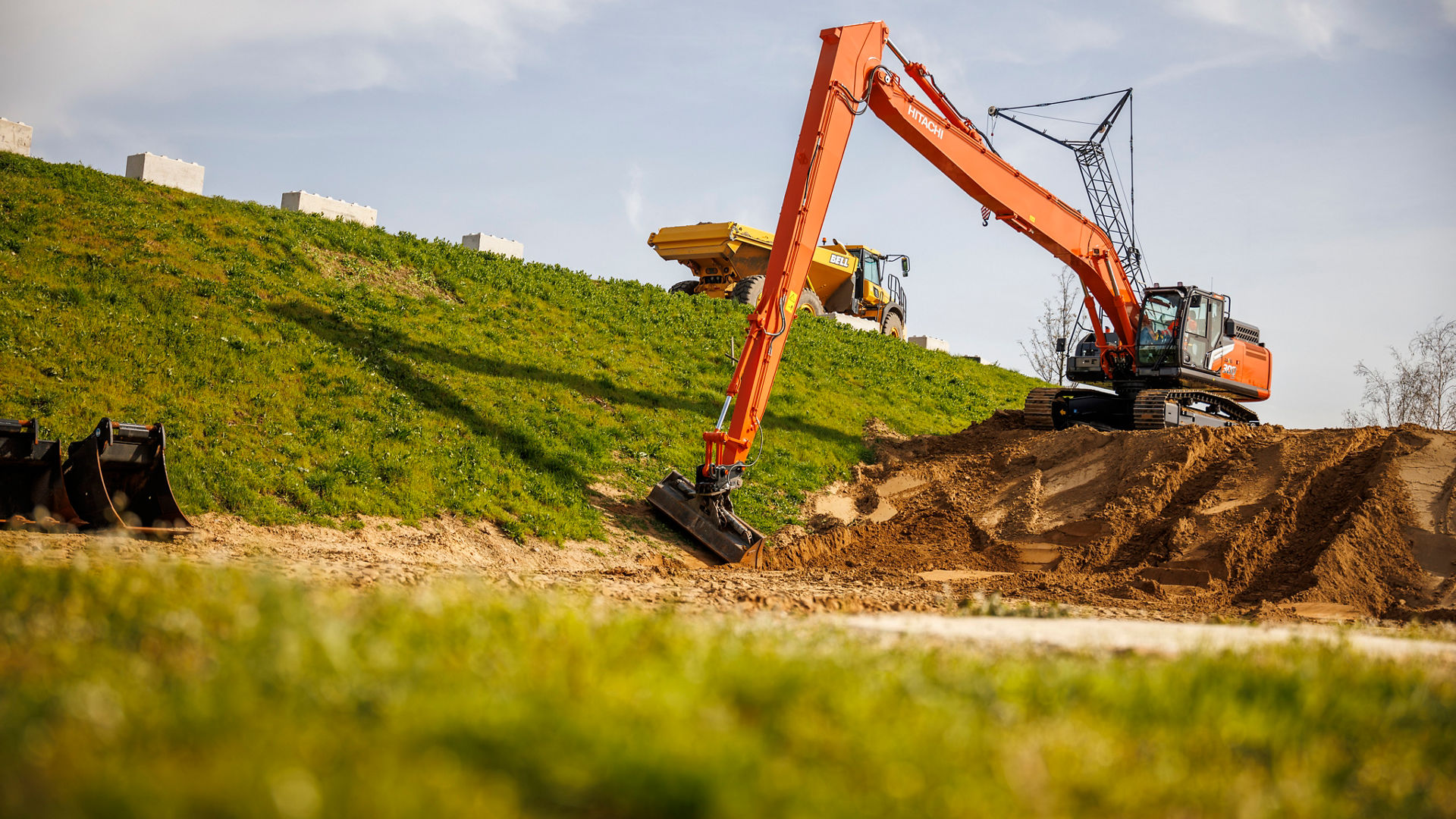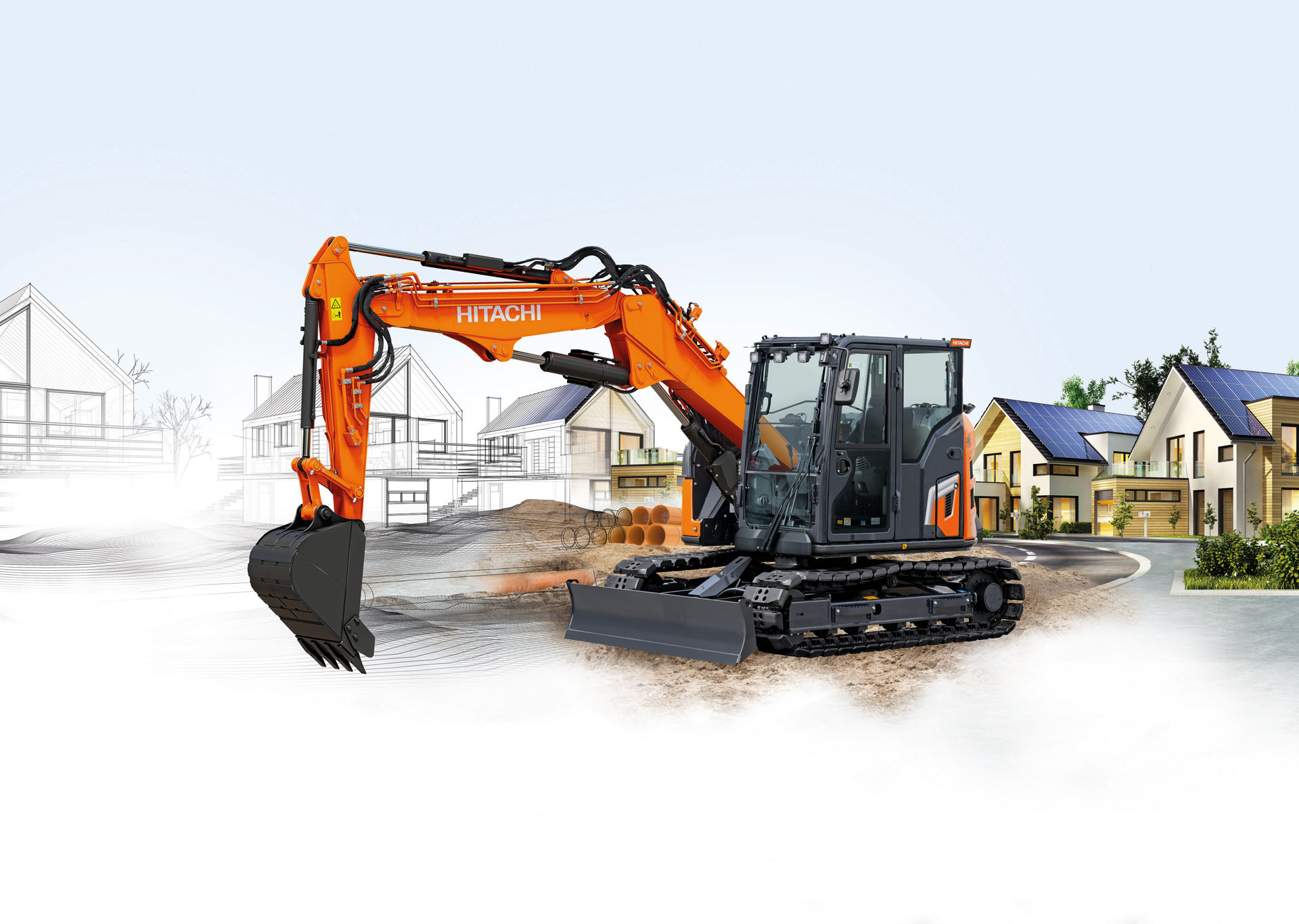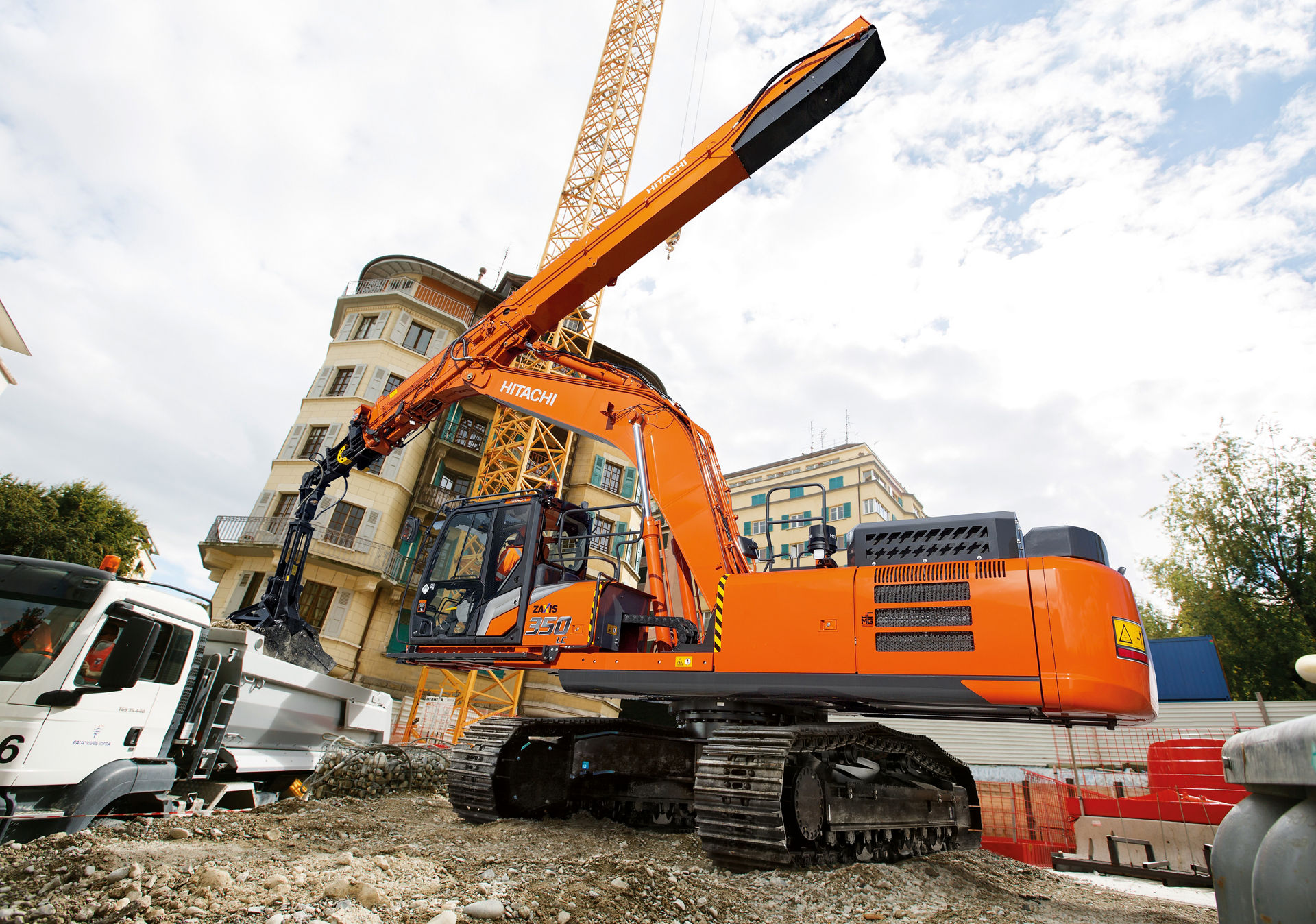Choosing the right excavator boom for the job

Mono boom
This is the most common type of boom and is suitable for many general tasks on the modern construction site, including digging, grading, lifting and loading. Because this boom is short (compared to most others on this list) its swing range is limited, but this means the excavator can get through its work quickly. With this setup, it’s also possible to equip the machine with a large bucket for even more efficient operations. One downside is that a mono boom has a limited reach.

Two-piece boom
This configuration offers plenty of versatility and is a great choice for digging where space is limited by structures, for example in a building or under a bridge. This is because its double joint allows the excavator to work in places with restricted height. The two-piece option is also capable of lifting and digging very close to the machine. (Hitachi also offers a three-piece boom for extra flexibility, especially for demolition projects.)
Long-reach or super-long front boom
When an extended reach is essential, these booms get the job done. They are perfect for tasks such as dredging rivers and lakes, carrying out maintenance on banks, and slope-finishing work.

Telescopic boom
Because they are able to remove material from 30m below ground, these booms are ideal for deep excavations, such as at building sites in urban areas. Their adjustable reach also means that they can load trucks quickly in tight spaces.
For more information on the booms we can provide for your Hitachi excavator, please contact your local dealer.
Why stop reading now? Others also liked:

Subscribe
Keep up to date with the latest news from Hitachi Construction Machinery (Europe) NV (HCME).



